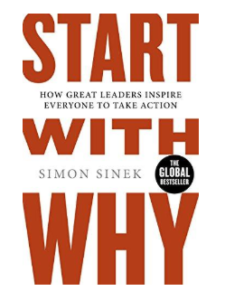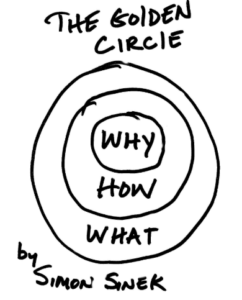Being Authentic Builds Connection


 As my wife and I were coming back from a trip to my hometown this past weekend, a group of 20+ motorcycles came up behind us and passed. As they drove by, each bike roared that signature sound that make many dream: “That will be me someday”. Freedom. Unity. Harmony. Each bike was from the same manufacturer. Riders wore matching and embroidered leather jackets. Many had beards, tattoos and sunglasses. Some wore bike helmets while others let the wind blow in their hair. Swiftly they passed, focused on the road ahead. Close your eyes…can you hear it… can you feel it…. but most of all…can you see it? (If not, I had my wife take the attached picture)
As my wife and I were coming back from a trip to my hometown this past weekend, a group of 20+ motorcycles came up behind us and passed. As they drove by, each bike roared that signature sound that make many dream: “That will be me someday”. Freedom. Unity. Harmony. Each bike was from the same manufacturer. Riders wore matching and embroidered leather jackets. Many had beards, tattoos and sunglasses. Some wore bike helmets while others let the wind blow in their hair. Swiftly they passed, focused on the road ahead. Close your eyes…can you hear it… can you feel it…. but most of all…can you see it? (If not, I had my wife take the attached picture)
I thought to myself “who are these guys and what makes them do this?” Same bike brand, jackets, and outward appearance. How did they build this type of camaraderie, belonging and following…dare I say common culture?
 Before I finish that thought, I have always been a fan of the British-American author, motivational speaker and organizational consultant Simon Sinek. His candor, insight, humor and direct delivery style always captures my attention. Plus he challenges my preconceptions of what a leader really is and makes me want to improve. I have watched his videos and TedTalks, and recently read his book “Start with Why”. In his book, he challenges leaders to inspire their customers and employees by defining their company mission first in terms of “why” they are in business not by “what” the business does. By defining why a company is in business first, he believes it inspires people and therefore builds deeper, longer lasting connections not only with customers but also employees. I’ll explain it this way…
Before I finish that thought, I have always been a fan of the British-American author, motivational speaker and organizational consultant Simon Sinek. His candor, insight, humor and direct delivery style always captures my attention. Plus he challenges my preconceptions of what a leader really is and makes me want to improve. I have watched his videos and TedTalks, and recently read his book “Start with Why”. In his book, he challenges leaders to inspire their customers and employees by defining their company mission first in terms of “why” they are in business not by “what” the business does. By defining why a company is in business first, he believes it inspires people and therefore builds deeper, longer lasting connections not only with customers but also employees. I’ll explain it this way…
Steve Job’s original purpose for starting Apple was: “To make a contribution to the world by making tools for the mind that advance humankind.” The focus was on “make a contribution to the world” and “advance humankind” not on making the best tools ( iMac, iPad, iPhone,). The tools were simply a means to a bigger end…not the end itself. To make it more interesting, their tools weren’t even the cheapest, fastest or most compatible, but people stand in long lines for days for them….why?
Next, Harley Davidson, the well-known motorcycle company I alluded to above, starts their mission statement with: “We fulfill dreams… “ . In their case, customers are willing to wait long cycle times for “their dream” and many even get a Harley Davidson tattoo while they wait…even employees! What would make a person wait for a product they can get immediately from another company and then get something as permanent as a tattoo of that company while they wait?
Lastly, when Sam Walton started Walmart, his mission was to “serve people and his community”. For decades, Walmart was an unstoppable force and yet didn’t have many of the same business advantages as Kmart and Target whom incorporated about the same time. How could Walmart dominate so completely without the same business advantages?
 In all 3 examples, Simon points out that he believes their success was linked to a mission that was first based on “why” the company is in business (to advance humankind, to fulfill dreams and to serve people) and NOT “what” the company did (make computers, bikes and offer the lowest prices). He calls this the “Golden Circle” and contends that when the mission starts with “why”, it inspires and can connect at a personal level with customers and employees that share those same beliefs. Their purchase of the product or acceptance of a job from a “why” based company can represent an outward expression of who they believe they are… and likely is congruent with their values. They may even subconsciously think “my purchase or job advances humankind, fulfills dreams and serves the community” but whether it does or doesn’t isn’t the point. In fact, the point is if a company’s purpose begins with “why” and aligns with the beliefs of their employees and customers, it can inspire them to become the best version of themselves and create a “cult like following” or in other words…a common culture to live by.
In all 3 examples, Simon points out that he believes their success was linked to a mission that was first based on “why” the company is in business (to advance humankind, to fulfill dreams and to serve people) and NOT “what” the company did (make computers, bikes and offer the lowest prices). He calls this the “Golden Circle” and contends that when the mission starts with “why”, it inspires and can connect at a personal level with customers and employees that share those same beliefs. Their purchase of the product or acceptance of a job from a “why” based company can represent an outward expression of who they believe they are… and likely is congruent with their values. They may even subconsciously think “my purchase or job advances humankind, fulfills dreams and serves the community” but whether it does or doesn’t isn’t the point. In fact, the point is if a company’s purpose begins with “why” and aligns with the beliefs of their employees and customers, it can inspire them to become the best version of themselves and create a “cult like following” or in other words…a common culture to live by.
With culture a top priority at every company, I found this book and the concept of “Why” very inspiring. Not only how I lead my teams at work but how I lead myself and family to ensure that the “what” I am trying to achieve is tied to a clear “why” I want it and aligned to my values to ensure it is congruent with the person I want to become.
 My family and I are returning from a week of vacation at the beach. The hotel we stayed at has many pools, beaches, water slides and activities as well as secluded quiet areas to read, reflect and relax…something for everyone.
My family and I are returning from a week of vacation at the beach. The hotel we stayed at has many pools, beaches, water slides and activities as well as secluded quiet areas to read, reflect and relax…something for everyone.
One water ride that stood out is called the Rapids River. A mile long water ride that is comprised of numerous sections of very rough, man-made tidal surges and “rapid water” that you ride a tube through. Each section is broken up only by “hop off points” where the water gets temporarily calm for those wishing to get in or out. My son Matthew and I rode this many times over the last few days. Attracted to the adrenal rush, we couldn’t get enough of the fast paced, unpredictable and exciting challenge each section provided. At times, it felt like we would be knocked off the tube and swept away, but staying on the tube and holding on tight proved to be the best way to navigate the rough water together. In fact, once we completed all sections, the fear of falling off dissipated and we literally ran back to the beginning to start it all over again. It seemed the more time we spent in the rough water, the more confident we were we could handle it…together.
As the week went on though, the desire to complete all sections as fast as we could became tiring. Instead of racing to the next rapid, we began getting out and relaxing at the hop off points before tackling the next challenging section. We talked, laughed and spent time together, unknowingly making the journey more memorable and the next series of rapids more enjoyable when the time came to face them.
This made me think about my life and the transformation underway at GE, and how the current challenges in both are simply the “rough waters” in this section of my journey. It reaffirmed the importance of holding on together during difficult times, but also taking a break, reflecting on where I am and enjoying the people I am with during the journey… especially as we navigate the rapid rivers of our lives. I now plan to “hop out” now and then as the rapids will always be there… but the people I am riding with won’t.
I’m sure I’ll see you in the rapids, but cannot wait to hear about your journey with others in the calmness in between.